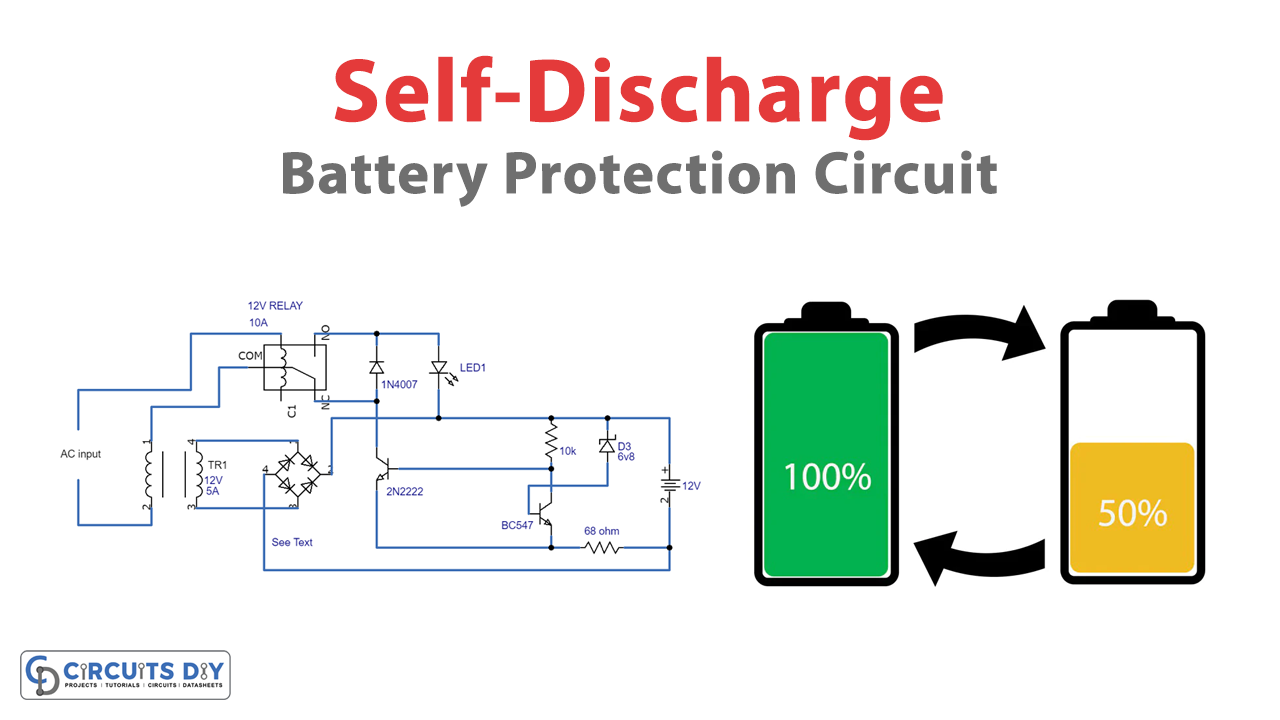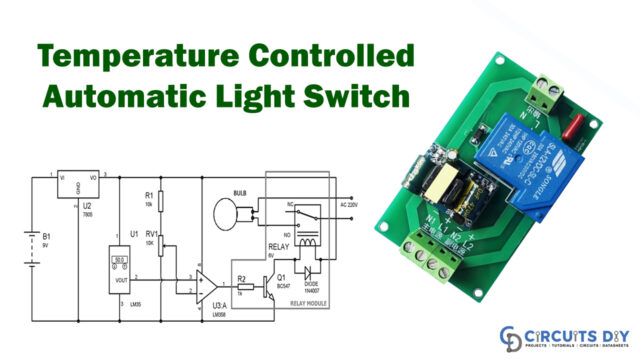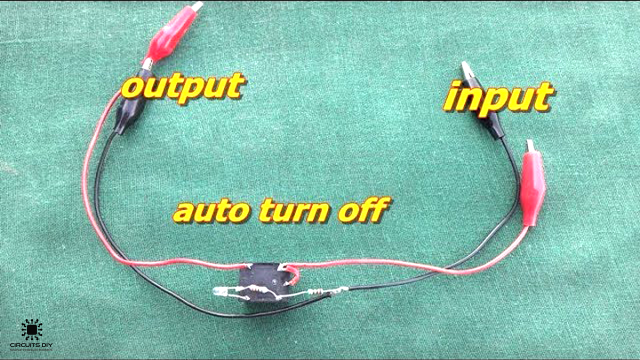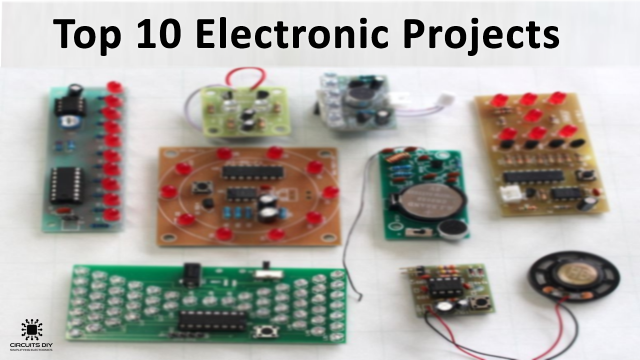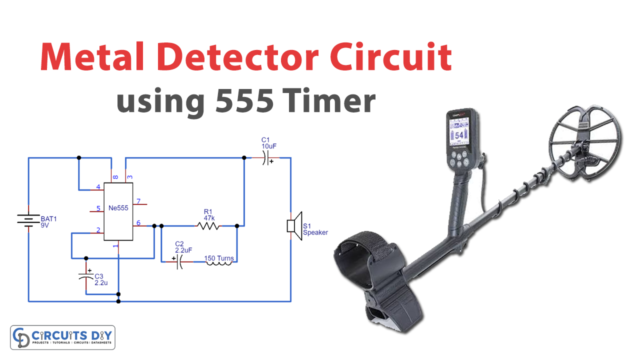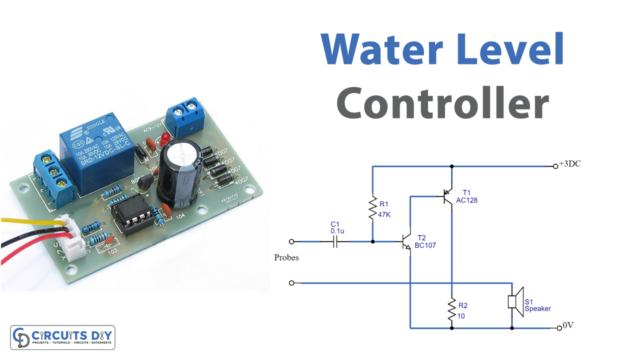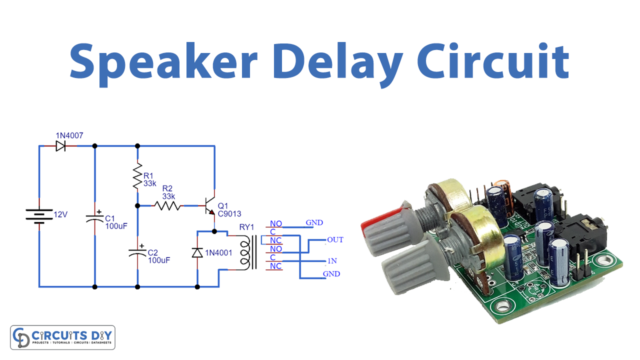This article presents a simple circuit that protects lead acid batteries from self-discharging, particularly during periods of disuse or non-charging. The circuit prevents self-discharge and ensures that the battery remains fully charged and in good condition, thereby promoting overall battery health.
This circuit is highly beneficial for preserving the quality of dormant lead-acid batteries that still work. With this circuit in place, you can leave your battery dormant for as long as you need, confident that it will remain charged and ready for use when needed. So, learn how to safeguard your battery and keep it in optimal condition with our innovative circuit.
Hardware Required
| S.no | Components | Value | Qty |
|---|---|---|---|
| 1 | Transformer | 12V 5 A | 1 |
| 2 | Transistor | 2n2222 BC547 | 1 1 |
| 3 | Resistor | 10k, 68 | 1, 1 |
| 4 | Battery | 12V | 1 |
| 5 | Relay | 12V 10AMP | 1 |
| 6 | Diode | 1N4007 | 1 |
| 7 | Zener Diode | 12V 400mW | 1 |
| 8 | Diode Bridge | 6A4 X 4nos | 1 |
| 9 | LED | RED | 1 |
Circuit Diagram
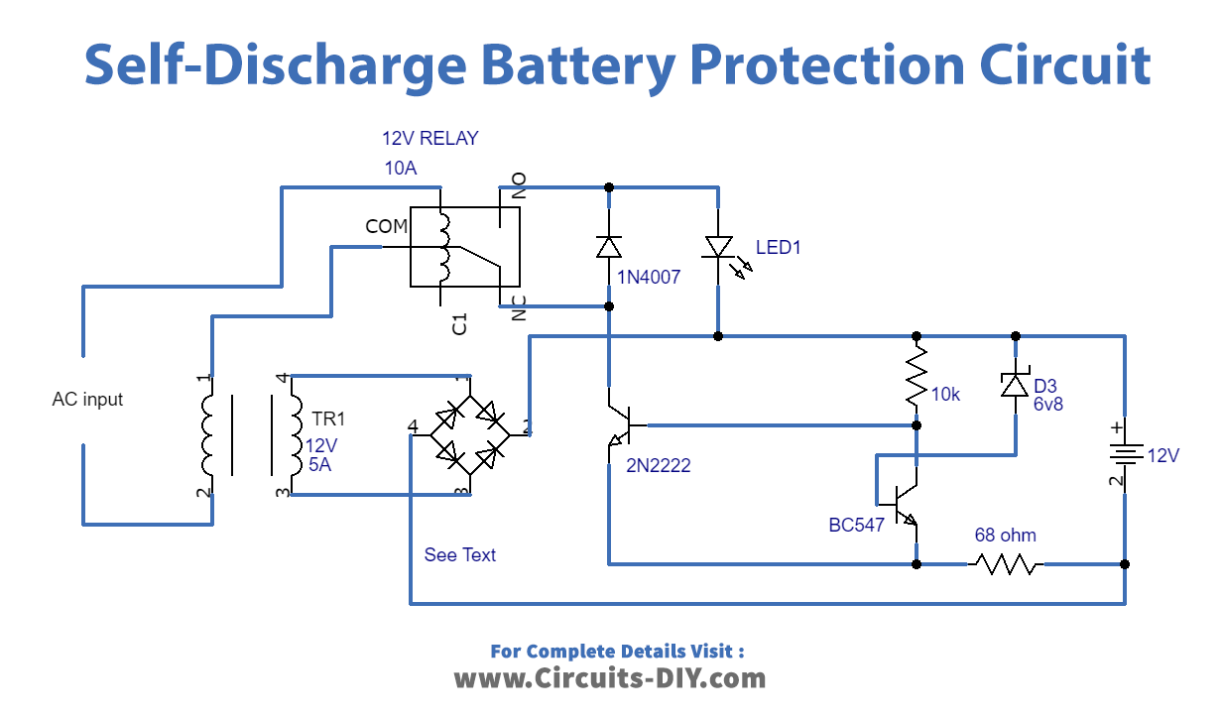
How the Circuit Operates
The circuit is constructed using a Schmitt trigger T1/T2 Zener and a Zener diode D7 that establishes the charge state at which the charger switches off. Resistor R2 provides the necessary hysteresis.
Disconnect the mains and examine the relay to determine if the relay turns on and off using regulated power supply voltages when there is no battery attached to the terminals.
How to Configure
To set up this self-discharge battery protector circuit, adjust the voltage across the battery terminals to 13.6 V and 12.5 V. You can fine-tune the “on” threshold by connecting a 1N4148 in series with D7. You can alter the “off” threshold value by changing the R2 value, such as replacing it with a 100-ohm preset.
Alternatively, replace the mains transformer and bridge rectifier with a battery charger, allowing you to assemble the remainder of the circuit into the charger.
However, connecting a completely discharged battery (below 10 V) to the circuit is impossible since the relay will not activate. Instead, you should charge such a battery to above 10 V. Another option is to insert a switch in parallel with the relay contact and turn off the mains using the switch.
Using Two Batteries
You may also use this circuit to maintain and protect two 12 V batteries from self-discharge, provided that the secondary voltage of the mains transformer, the Zener voltage of D7, the hysteresis, and the coil voltage are all doubled. Additionally, you should connect the batteries in series across the terminals and use a fuse (F1) to safeguard against a short circuit.
You may also use a 1 A fuse to safeguard the primary transformer circuit. Since the battery is the primary focus of the activity, the circuit does not require a smoothing capacitor.
Final Thoughts
In conclusion, this article has provided valuable insights into preventing battery self-discharge using our innovative circuit. By utilizing the Schmitt trigger and Zener diode components, this circuit protects your lead acid battery from discharging and ensures that it remains fully charged and in excellent condition, ready for use whenever you need it. With our step-by-step guide on how to set up the circuit, you can quickly assemble and implement this solution.


